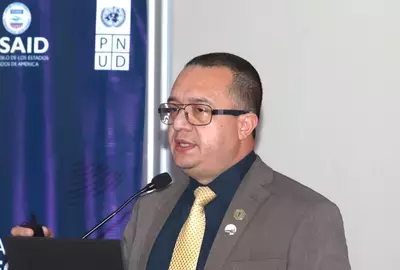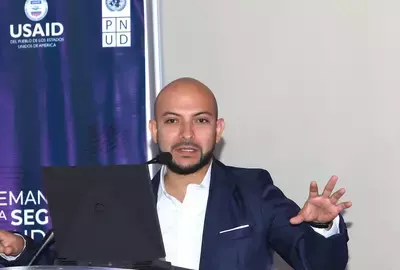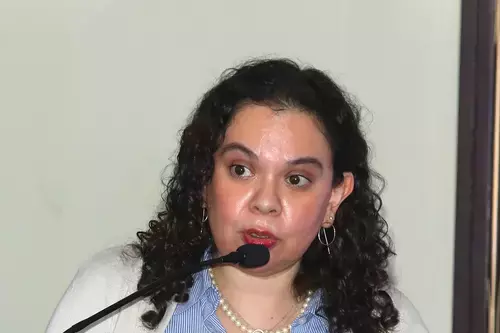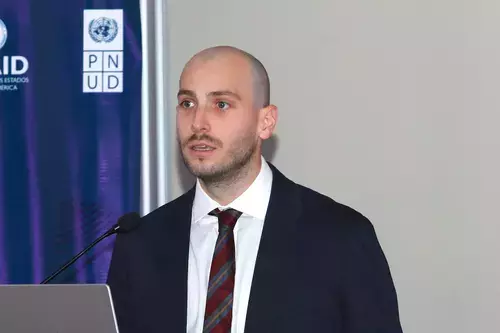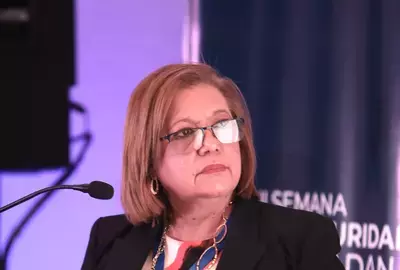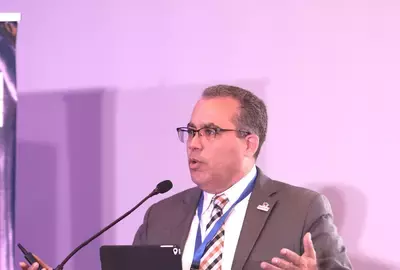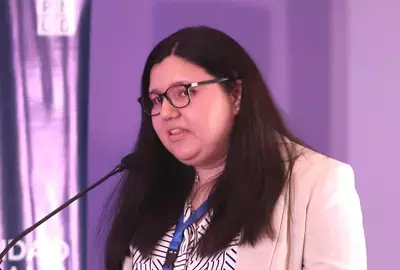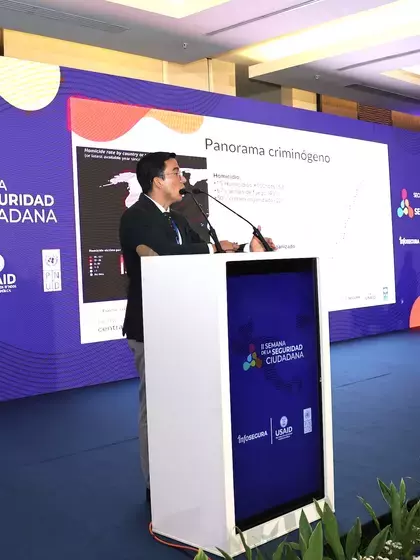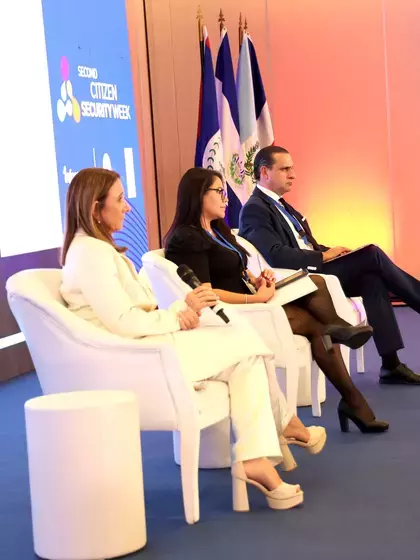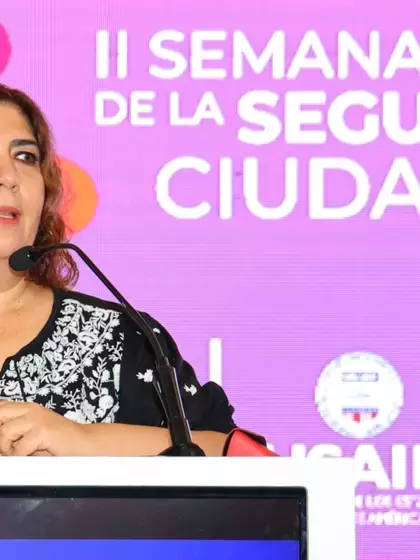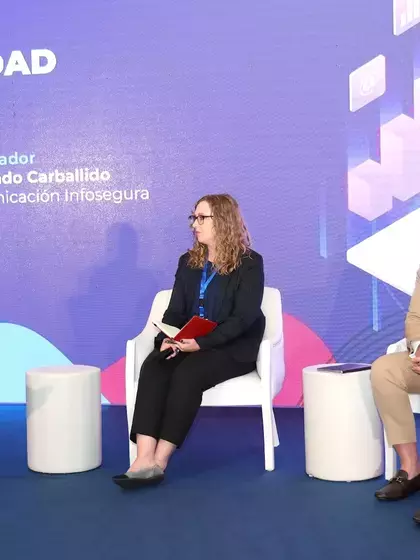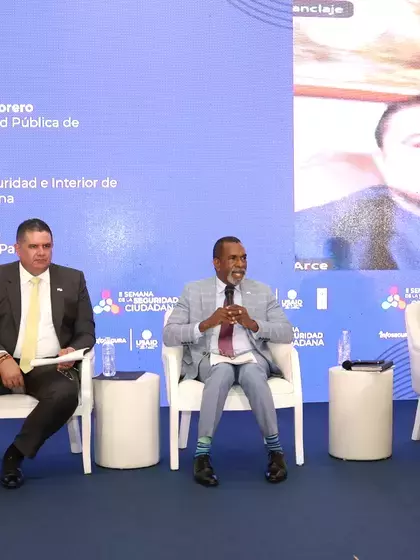
Innovative Citizen Security Solutions with a Territorial Focus
The second day at Security Week started with a keynote address by Fabiola Zermeño. Then a series of thematic sessions followed,which were conducted in two different breakout rooms, in order to address a wider range of topics.
The discussion in one breakout room revolved around innovative solutions for citizen security with a territorial focus, and the first session was “Territorial and participatory management for citizen security.”
In a series of analyses and studies, InfoSegura detected that urban centres and large demographic concentrations are more vulnerable to a variety of forms of violence, such as organized- and common crime, armed- and homicidal violence, as well as other social phenomena such as migration and human trafficking. Even within a country, crime and violence in one place differs from another. This calls for means to be put to use, like leveraging data, technological innovations or forming partnerships with other stakeholders to optimize the efforts made in each country to combat crime.
To address this topic, we had Macarena Rau, International President of Crime Prevention Through Environmental Design (CPTED) Association who spoke about urban interventions in preventing violence. In her presentation, Rau noted that, “as important as the crime itself is the place in which it takes place.” Consequently, the association she presides over proposes a method to reduce the perception of insecurity based on an understanding of the physical and social architecture of cities. She cited as an example the first “CEPTED Guide” with a gender approach. It included recommendations for the safety of women in areas with high crime rates. One such recommendation was urban lighting, among others.
We also heard an experience from the city of Newark in the United States of America, with its violence prevention offices, presented by Alejandro Gimenez Santana, Director of the Newark Public Safety Collaborative (NPSC), who presented the development of a collaborative model for improving public security based on evidence. The principles governing this model can be summed up as follows: Transparency in data access; mobilization of community resources and personnel experience; provide the tools that community groups and government agents need; engage the community in public safety work in the urban context. “By involving the community, you gather qualitative information that administrative records do not provide, and then take concrete actions,” he concluded.
The next two were presentations of local experiences. One was by Gerald Campos, Minister of Justice and Peace of Costa Rica, who described the workings of the Civic Centres for Peace in his country: spaces that offer security and protection, that are free from violence, discrimination, tobacco, alcohol, drugs and weapons. So far, these free programmes reach over 12 thousand minors.
The other were the Urban Wellbeing and Opportunity Centres (CUBO). National Coordinator Abraham Rivera described the way these spaces are run by partly handing it over to the young people in each community, on the different activities adapted according to the territories, and to the demand of the population for this type of place that, according to Rivera, promotes a transformation in the communities where they are located, until they become a focus of social and economic development.
Armed violence, territory and prevention strategies
This was the topic of the second session on that day. Managing citizen security requires understanding the way violence is organized in the territory and how the stakeholders act upon it. Knowing, explaining and understanding violent phenomena is fundamental for designing prevention strategies.
This panel, moderated by CONOSE Network Coordinator Carlos Ramos, included an intervention by Ignacio Cano of the National Autonomous University of Mexico, who presented the study on “Evaluating Homicide Prevention Programmes in Latin America”. “There are not many quality evaluations,” of homicide prevention programmes, he stated, “and few are carried out without conclusive results.” Weapons possession and carrying, gender-based violence and feminicide, restrictions on the sale of alcohol or police patrolling were some of the programmes that were evaluated. “The only impact came from projects that have an influence on firearm possession in public,” said Cano. However, he acknowledged that, “the influence some of these programmes have takes a longer period, and not the short or medium term.”
Gabriela Perez, InfoSegura specialist in Justice and rule of law, dissected the “Analysis of armed violence with a territorial focus in Guatemala.” This study is the outcome of collaboration and support InfoSegura provided the National Gun Violence Prevention Commission, led by the Ministry of Governance of Guatemala, as a basis for designing the national armed violence prevention strategy. The main conclusions are that, despite a drop in homicides since 2020, the proportion of firearm-related deaths has risen. One relevant item in the study is that, contrary to what was previously believed, registered weapons are the primary weapon in homicide. “In fact, in some areas of the country, it is customary to bear a weapon as an accessory. This can lead to their use in a moment of violence,” noted Perez.
Alfredo Malaret of the Urban Violence Programme Officer. University of San Diego described the components that make the Offices of Violence Prevention (OVPs) work: they need to be independent but not disconnected from the police. They are under leadership by civilians who need to take on the role of coordinator. It is important that coordination be based on data and diagnostic assessments and each member should have specific roles and responsibilities. They should also have a pre-defined budget, the commitment of the authorities, a well-defined agenda and carry out impact assessments.
Innovation is ever present
After lunch, it was time to talk about technology in the session called, “Technological Innovation to Enhance Citizen Security and Justice,” moderated by UNDP Resident Representative Inka Mattila of the Dominican Republic. In her intervention, she emphasized the importance of institutional architecture for innovation and strategies for managing change, in order to protect the improvements and prevent social backtracking.
There were three panellists on this occasion. First, Iris Artica, Director of the Electronic Centre for Judicial Documentation, CEDIJ, Honduras who gave a demonstration of how the Judicial Statistics System works in her country.
Next, Reyson Lizardo of the Ministry of the Presidency of the Dominican Republic delivered an interesting lecture on the way the exchange of citizen security information works in his country. To close the session, Claudio Ramírez, Coordinator of the Criminal Analysis Unit at the National Public Prosecutor's Office of Chile, spoke of some of the new tools for criminal analysis, like using artificial intelligence (AI) to detect criminal organizations, making it possible to identify the way illegal markets and gangs work. “However, artificial intelligence perfects, but does not replace the criminal analyst,” he explained. “Criminal behaviour is predictable; therefore AI makes our investigation more effective and efficient,” he explained in the end.
Human mobility and citizen security
The session closed with an animated presentation on “Territory, Citizen Security and Human Mobility”, moderated by Johanna Saenz, UNDP-LAC Regional Adviser for Human Mobility. In her introduction, Saenz pointed out that human mobility and irregular migration are multidimensional phenomena, “arising from the vulnerable conditions that a large part of the population lives in, both in their countries of origin and the international framework.”
Therefore, it is indispensable that these phenomena be understood in their full dimension, which was the purpose of this session.
The first speakers were Jesus Saenz Solís, of the University of Costa Rica and a member of the CONOSE Network, who spoke about “Migration and the Environment of Violence in Central America and the Dominican Republic: machine learning-based analysis”, and Lyla Gil, UNDP InfoSegura analyst explained the “Analysis of citizen security, human mobility and development in the countries in the north of Central America”.
They both noted that factors like age, social class, insecurity and—in recent years—deterioration of democracy in some countries, are the main precursors for human mobility.
“Although violence, inequality, victimization or the sense of insecurity have been drivers of migration, deterioration of democracy has emerged as a reason for migrating,” explained Lyla Gil. They also observed that young people face social exclusion that drives them to take a risk and move, most of them through irregular migration.
The challenge according to Jesus Saenz is generating information with greater levels of disaggregation and finding innovative ways to collect data with hidden populations, in order to build knowledge about human mobility with a gender approach at the regional level.
Finally, the day closed with two experiences from the field that caught the attention of the audience. One was an intervention by Salto Angel Association of Colombia, presented by its president, Maybelis Avila. She shared this association's achievements and operation: “A commitment to integrating and reinforcing individual and collective resilience,” she said, where—from the start—human mobility is considered a central element to empower local development by setting up host networks, both in institutions and in the communities. Also, by considering the value of migrant social capital.
This initiative is led by the UNDP in partnership with aid organizations and the Municipal Administration of Maicao. Participants included Venezuelan migrants and Colombian returnees, as well as the host community, all of whom experience vulnerability. The commitment was to generate incentives for volunteer community work.
The other experience is called the Trafficking in Persons work CS2.0, with Maia Hibben de Hibben from CariSECURE. This regional USAID-financed programme was designed to improve the way governmental and nongovernmental partners compile, analyse, manage and use data on crime and violence to inform policymaking and citizen security programmes.
The day concluded with InfoSegura Project Coordinator in Guatemala, Eduardo Díaz sharing a summary of the highlights of the day.



